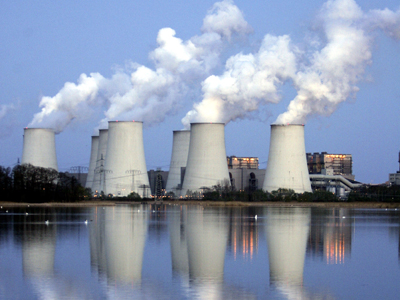Korean Government Plans to Reduce Ratio of Nuclear Power Generation

The Private-public Working Group for the National Basic Energy Plan made public its draft for a second plan for 2013 to 2035 on October 13. One noteworthy point is that it lowers the ratio of nuclear power generation to between 22% and 29% by 2035.
Given that the preceding plan covering the period of 2008 to 2030, which was set up five years ago, had a target of 41%, this implies that a significant change is ahead when it comes to Korea’s energy policy. Some experts are pointing out that the new target is not meaningful, because the current ratio is 26%. However, many people are appreciating it in that it can be an expression of the government’s will to not rely heavily on atomic power for the upcoming decades. “The target rate has been adjusted downward from approximately 40% to below 30%, which is undoubtedly a significant turning point in national energy policy,” said the Ministry of Trade, Industry and Energy, which is the relevant ministry.
The recommendation for the downward revision is based on the declining social acceptance of nuclear power generation as of late. In fact, atomic power is the most economical and eco-friendly energy source for now. Its generating cost stands at 47.08 won (US$0.04) per kilowatt-hour (kWh), whereas those of coal and liquefied natural gas (LNG) are as high as 65.1 won (US$0.06) and 125.2 won (US$0.12) per kWh, respectively.
Meanwhile, nuclear power plants’ greenhouse gas emissions are as low as those of new and renewable energy sources such as wind and solar power. It is this aspect that the previous Lee Myung-bak administration focused on to shore up the role of atomic power in its first basic plan.
However, concerns over the safety of nuclear power generation have been raised since the Fukushima disaster in 2011, and the matter has been compounded with the difficulty of finding sites for the construction of atomic power stations. Under the circumstances, the working group is considering that the nuclear-friendly policy cannot hold any longer.
“We have taken into account not only the economic advantages and eco-friendliness but also the safety and social acceptance in setting the new target,” said Gachon University professor Kim Chang-seop, head of the working group. He continued, “The change in ratio signifies that the general public does not support the nuclear expansion policy any longer.”
The revision of the target ratio was one of the hottest-button issues in the working group discussions that continued for the past five months. At first, the group aimed to fix the ratio between 7% and 35%, under the principle of minimizing the social conflicts over the issue. Then, it narrowed the target to 20%-30% by ruling out the below-20% section, which can be achieved by canceling all of the ongoing nuclear power plant construction projects and shutting down some of the atomic power stations in operation, and the over-30% section that can be achieved by means of nuclear power expansion.
The new target range will be reflected in the final plan late this year, when the specific figure will be fixed. Then, the government will reshape its nuclear power roadmap based on the finalized figure, deciding on which old nuclear power plants will be decommissioned, how many new stations will be built down the road, and other details.
Much attention is being paid to which energy source will take the place of nuclear power with its ratio being limited to below 30%. The working group is predicting that the electric power-to-energy ratio will go up from 19% to 28% between 2013 and 2035, as national power consumption increases by 2.5% on annual average during the period.
Although the increase in electric power demand is to be kept to the minimum, the government needs to supply more power anyway. At present, coal and LNG are the most promising substitutes for nuclear power allowing for the slow commercialization of alternative energy sources. The two sources’ power generation ratios are 31% and 28% each as of now.
However, the general consensus is that coal is not suitable as a future energy source, in that its greenhouse gas emissions are more than double those of LNG. It is said that the working group is inclined towards LNG in this context.






